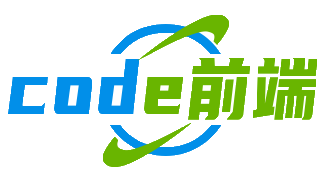C++常用函数:字符串操作函数
一、Python常用字符串操作函数
Python中常用的字符串操作函数包括:strip()、split()、join()、replace()等。
strip()函数用于去除字符串开头和结尾处的空格;split()函数可以将一个字符串按照指定的分隔符分割成一个列表;join()函数可以将一个列表中的元素按照指定的分隔符拼接成一个字符串;replace()函数可以替换字符串中的子串。
下面是Python字符串操作函数的示例代码:
#include <iostream>
#include <string>
using namespace std;
int main() {
string s = " hello, world! ";
cout << "原始字符串:" << s << endl;
// 使用strip()函数去除空格
s = s.strip();
cout << "去除空格后的字符串:" << s << endl;
// 使用split()函数按照逗号分隔字符串
vector<string> v;
string delim = ",";
size_t start = 0, end = s.find(delim);
while (end != string::npos) {
v.push_back(s.substr(start, end - start));
start = end + delim.length();
end = s.find(delim, start);
}
v.push_back(s.substr(start, end - start));
cout << "分割后的字符串:" << endl;
for (int i = 0; i < v.size(); i++) {
cout << v[i] << endl;
}
// 使用join()函数按照逗号拼接字符串
string s_new = "";
for (int i = 0; i < v.size(); i++) {
if (i != 0) {
s_new += ",";
}
s_new += v[i];
}
cout << "拼接后的字符串:" << s_new << endl;
// 使用replace()函数替换字符串
string s_replace = "hello, world!";
s_replace = s_replace.replace(0, 5, "hi");
cout << "替换后的字符串:" << s_replace << endl;
return 0;
}
二、C++字符串操作函数
C++中有一些内置的字符串操作函数,如strcpy()、strcat()、strlen()、strcmp()等。
strcpy()函数用于将一个字符串复制到另一个字符串中;strcat()函数用于将一个字符串连接到另一个字符串的末尾;strlen()函数用于获取字符串的长度;strcmp()函数用于比较两个字符串是否相等。
下面是C++字符串操作函数的示例代码:
#include <iostream>
#include <cstring>
using namespace std;
int main() {
char s[] = "hello, world!";
cout << "原始字符串:" << s << endl;
// 使用strcpy()函数将字符串复制到另一个字符串中
char s_copy[20];
strcpy(s_copy, s);
cout << "复制后的字符串:" << s_copy << endl;
// 使用strcat()函数将字符串连接到另一个字符串的末尾
char s_cat[20] = "hi, ";
strcat(s_cat, "hello");
cout << "拼接后的字符串:" << s_cat << endl;
// 使用strlen()函数获取字符串的长度
cout << "字符串的长度为:" << strlen(s) << endl;
// 使用strcmp()函数比较两个字符串是否相等
char s1[] = "hello";
char s2[] = "hello";
char s3[] = "world";
if (strcmp(s1, s2) == 0) {
cout << "s1 和 s2 相等" << endl;
}
if (strcmp(s1, s3) != 0) {
cout << "s1 和 s3 不相等" << endl;
}
return 0;
}
三、C语言字符串操作函数
C语言中常用的字符串操作函数包括gets()、puts()、printf()、scanf()等。
gets()函数用于从标准输入流读取一行字符串;puts()函数用于向标准输出流输出一个字符串;printf()函数用于格式化输出变量;scanf()函数用于从标准输入流读取数据。
下面是C语言字符串操作函数的示例代码:
#include <stdio.h>
#include <string.h>
int main() {
char s[20];
printf("请输入一个字符串:");
gets(s);
printf("您输入的字符串:%s\n", s);
char s2[20] = "hello, world!";
puts(s2);
int a = 10, b = 20;
printf("%d + %d = %d\n", a, b, a + b);
int c;
scanf("%d", &c);
printf("您输入的数字:%d\n", c);
return 0;
}
四、字符串操作的常见函数
除了上述语言自带的字符串操作函数外,还有一些常见的字符串操作函数,如tolower()、toupper()、isdigit()、isalnum()等。
tolower()函数用于将一个字符转换为小写字母;toupper()函数用于将一个字符转换为大写字母;isdigit()函数用于判断一个字符是否为数字字符;isalnum()函数用于判断一个字符是否为字母或数字。
下面是字符串操作的常见函数的示例代码:
#include <iostream>
#include <cctype>
using namespace std;
int main() {
char s[] = "Hello, World!";
cout << "原始字符串:" << s << endl;
// 使用tolower()函数将字符串转换为小写字母
string s_low = "";
for (int i = 0; i < strlen(s); i++) {
s_low += tolower(s[i]);
}
cout << "转换为小写字母后的字符串:" << s_low << endl;
// 使用toupper()函数将字符串转换为大写字母
string s_up = "";
for (int i = 0; i < strlen(s); i++) {
s_up += toupper(s[i]);
}
cout << "转换为大写字母后的字符串:" << s_up << endl;
// 使用isdigit()函数判断字符是否为数字字符
char a = '1', b = 'a';
if (isdigit(a)) {
cout << a << "是数字字符" << endl;
} else {
cout << a << "不是数字字符" << endl;
}
if (isdigit(b)) {
cout << b << "是数字字符" << endl;
} else {
cout << b << "不是数字字符" << endl;
}
// 使用isalnum()函数判断字符是否为字母或数字
char c = '1', d = '.';
if (isalnum(c)) {
cout << c << "是字母或数字" << endl;
} else {
cout << c << "不是字母或数字" << endl;
}
if (isalnum(d)) {
cout << d << "是字母或数字" << endl;
} else {
cout << d << "不是字母或数字" << endl;
}
return 0;
}
五、VBA字符串操作函数
VBA中常用的字符串操作函数包括Len()、Left()、Right()、Mid()、InStr()、Replace()等。
Len()函数用于获取字符串的长度;Left()函数用于从字符串的开头获取指定数量的字符;Right()函数用于从字符串的末尾获取指定数量的字符;Mid()函数用于从字符串的指定位置获取指定数量的字符;InStr()函数用于查找一个字符串中是否包含另一个字符串;Replace()函数用于替换字符串中的子串。
下面是VBA字符串操作函数的示例代码:
Public Sub StringDemo()
Dim s As String, s_new As String
s = "hello, world!"
Debug.Print "原始字符串:" & s
' 使用Len()函数获取字符串长度
Debug.Print "字符串长度:" & Len(s)
' 使用Left()函数获取字符串开头的指定数量的字符
s_new = Left(s, 5)
Debug.Print "获取开头的指定数量的字符:" & s_new
' 使用Right()函数获取字符串末尾的指定数量的字符
s_new = Right(s, 6)
Debug.Print "获取末尾的指定数量的字符:" & s_new
' 使用Mid()函数获取字符串中指定位置的指定数量的字符
s_new = Mid(s, 4, 6)
Debug.Print "获取指定位置的指定数量的字符:" & s_new
' 使用InStr()函数查找字符串中是否包含另一个字符串
Debug.Print "字符串是否包含'world': " & InStr(s, "world")
' 使用Replace()函数替换字符串中的子串
s_new = Replace(s, "hello", "hi")
Debug.Print "替换后的字符串:" & s_new
End Sub
六、JS字符串操作函数
JS中常用的字符串操作函数包括charAt()、indexOf()、slice()、substring()、toUpperCase()、toLowerCase()等。
charAt()函数用于返回字符串中指定位置的字符;indexOf()函数用于返回字符串中指定子串的位置;slice()函数用于从字符串中获取指定起始位置和结束位置之间的字符;substring()函数用于从字符串中获取指定起始位置和结束位置之间的字符;toUpperCase()函数用于将字符串转换为大写字母;toLowerCase()函数用于将字符串转换为小写字母。
下面是JS字符串操作函数的示例代码:
var s = "Hello, World!";
console.log("原始字符串:" + s);
// 使用charAt()函数获取指定位置的字符
console.log("第6个字符是:" + s.charAt(5));
// 使用indexOf()函数查找子串的位置
console.log("子串'World'的位置是:" + s.indexOf("World"));
// 使用slice()函数获取指定起始和结束位置之间的字符
console.log("截取子串:" + s.slice(6, 11));
// 使用substring()函数获取指定起始和结束位置之间的字符
console.log("截取子串:" + s.substring(6, 11));
// 使用toUpperCase()函数将字符串转换为大写字母
console.log("转换 版权声明
本文仅代表作者观点,不代表Code前端网立场。
本文系作者Code前端网发表,如需转载,请注明页面地址。
上一篇:C++遍历二维数组:实现数组元素的有效访问 下一篇:掌握C++运算符重载技巧
 code前端网
code前端网


发表评论:
◎欢迎参与讨论,请在这里发表您的看法、交流您的观点。